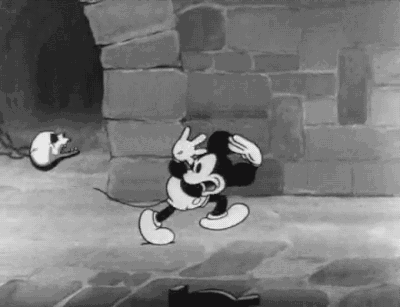Survey 9

Science and tools

With the new and improved invention of animation, the world of moving pictures was at peak take off. In 1833, the stroboscopic disc’s invention came to life, creating one of the critical components of animation history and the start of cinematography as we know and love today. Not until later, in 1928, would the one and only Walt Disney take inspiration from the animation masters, that being Émile Cohl and Eadweard Muybridge. Disney had already begun to draw out the first concept sketches of the infamous Mickey Mouse but truly made them shine when producing his first animation named Steamboat Willie.
Design

At the uprising of the new and fascinating invention, cinematography, commonly known as moving pictures, so was soviet artwork, more specifically the Stenberg Brothers. Vladimir and Georgii Stenberg worked together to design Russian film posters. You can see in the brother’s artwork the influence in Plakastil poster design mixed with photography. Their posters had many many visual elements and perspectives, causing you to sit and think, but don’t stare at them for too long as you might start to feel light-headed or dizzy. Most if not all of the brother’s poster designs included bold, eye-catching colours that can also be seen within Plakastil posters.
Written Citations
History of Animation. 8 Dec. 2020, en.wikipedia.org/wiki/History_of_animation.
“Mickey Mouse.” Wikipedia, Wikimedia Foundation, 6 Dec. 2020, en.wikipedia.org/wiki/Mickey_Mouse.
“Stenberg Brothers Movie Posters.” Movie Posters, www.cinematerial.com/artists/stenberg-brothers-i918.
Stenberg Brothers (Vladimir, 1899-1982; Georgi, 1900-1933) THE GHOST THAT ISN’T RETURNING. 5 Aug. 2015, thecharnelhouse.org/2015/08/05/the-stenberg-brothers-and-the-art-of-soviet-movie-posters/stenberg-brothers-vladimir-1899-1982-georgi-1900-1933-the-ghost-that-isnt-returning/.
Photography Reference
Films, Old Hollywood. “- Find & Share on GIPHY.” GIPHY, GIPHY, 15 July 2019, giphy.com/gifs/animation-walt-disney-mickey-mouse-l2JhL0Gpfbvs4Y07K.
“Poster, The Ghost That Isn’t Returning, 1929.” Cooper Hewitt, Smithsonian Design Museum, collection.cooperhewitt.org/objects/68724321/.






